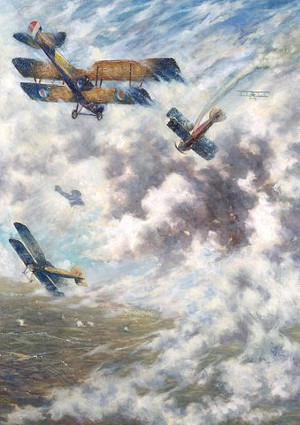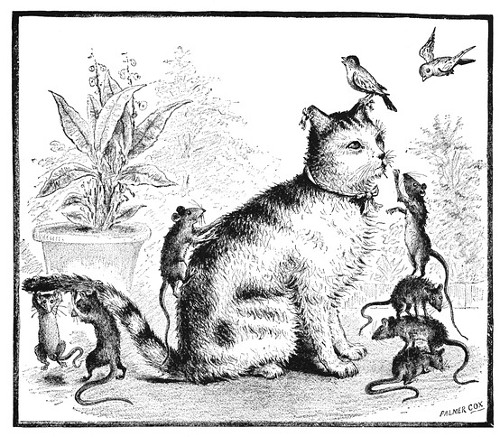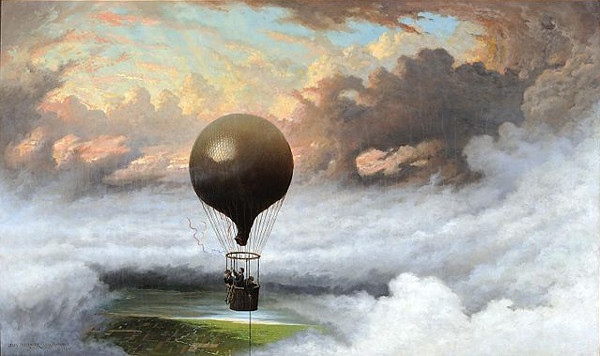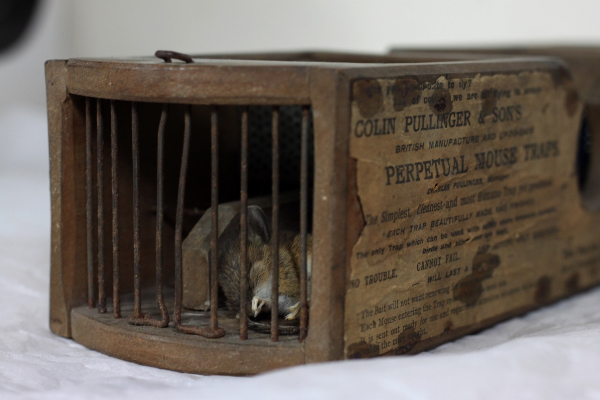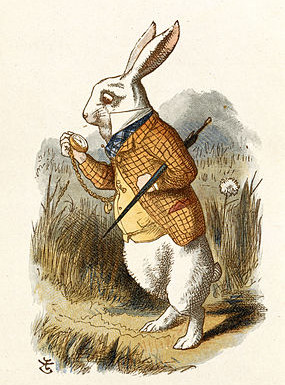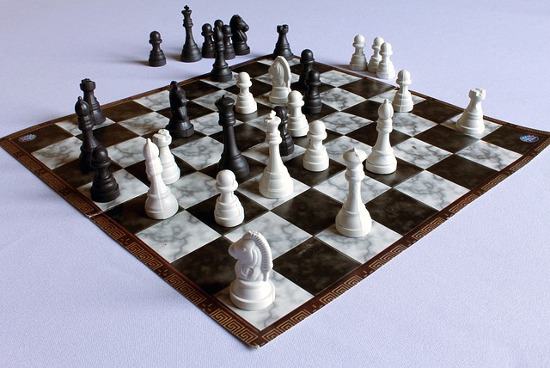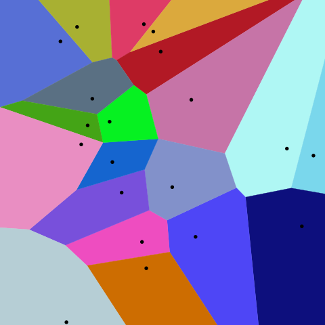
If a lion hunts a herd of antelope, what rules govern the herd’s behavior? One intriguing possibility is known as selfish herd theory: Rather than acting to benefit the group as a whole, each member positions itself so that there’s at least one other animal between it and the predator. This produces a pattern known as a Voronoi tesselation — if each dot in the diagram above is an antelope, then the surrounding colored region is the area that’s closer to that antelope than to any of its neighbors. If a lion enters your cell, then you’re the antelope that’s going to get eaten.
This understanding helps to explain some herd behavior. Each animal wants to make its “domain of danger” as small as possible and to be as far as possible from the predator. Dominant animals tend to get prime positions near the center, subordinate animals get pushed to the fringes, and the whole formation evolves continuously as predator and prey move about.
Studies have shown that groups of fiddler crabs tend to take up Voronoi patterns fairly quickly when a predator first appears, and to huddle together when the danger increases as each tries to reduce its surrounding polygon. This actually leads some to move toward the predator as they try to reach the center and put others between the hunter and themselves. Those that violate the movement rules tend to get picked off, which reinforces the evolutionary strength of the strategy.

